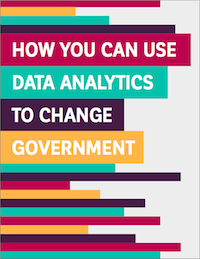
When a whistleblower tipped off the Department of Justice back in 2013 about Dr. Fata’s unprecedented medical malpractice, government officials had a hard time wrapping their heads around the claims — at first.
How could a renowned Michigan oncologist intentionally misdiagnose patients and then inject them with chemotherapy treatments? And how could he intentionally underdose patients who did in fact have cancer?
In total, 553 patients and their loved ones were victimized. Some patients died before seeing Dr. Fata sentenced to 45 years in prison on July 10, 2015. Others were left with organ damage, missing teeth, nerve damage and psychological and emotional scars.
Because of the nature of the harm, govern- ment officials are calling Dr. Fata’s case the most serious fraud case in U.S. history. Bring- ing him to justice took a brave whistleblower, government collaboration — and reliable data analytics.
“Our investigators partnered with the FBI, IRS and DoJ, including the U.S. Attorney’s Office in the Eastern District Michigan,” said Caryl Brzymialkiewicz, Assistant Inspector General and Chief Data Officer at the Department of Health and Human Services Office of the Inspector General. “They all worked collaboratively, nonstop, and pulled enough evidence together to take quick action, including the use of data analytics.”
When this case came in, the team checked the whistleblower’s lead against different data sets, including claims data, Brzymialkiewicz said. The data corroborated the whistleblow- er’s claims, but initially it was such an outlier that officials thought something was wrong with the data.
“We talk about two outcomes for this office: It’s really about protecting beneficiaries, as well as the programs,” she said. “So I tell that story because, in terms of detecting fraud, using data analytics is a huge mission.”
Healthcare is one of the key areas in government where data analytics is driving value, but it’s certainly not the only one. In Indiana, government employees are using data ana- lytics to combat the state’s opioid epidemic. The General Services Administration is using human capital analytics to inform human resources hiring and recruiting decisions. And there are countless other examples, several of which you’ll find in this guide.
All information that you supply is protected by our privacy policy. By submitting your information you agree to our Terms of Use.
* All fields required.



